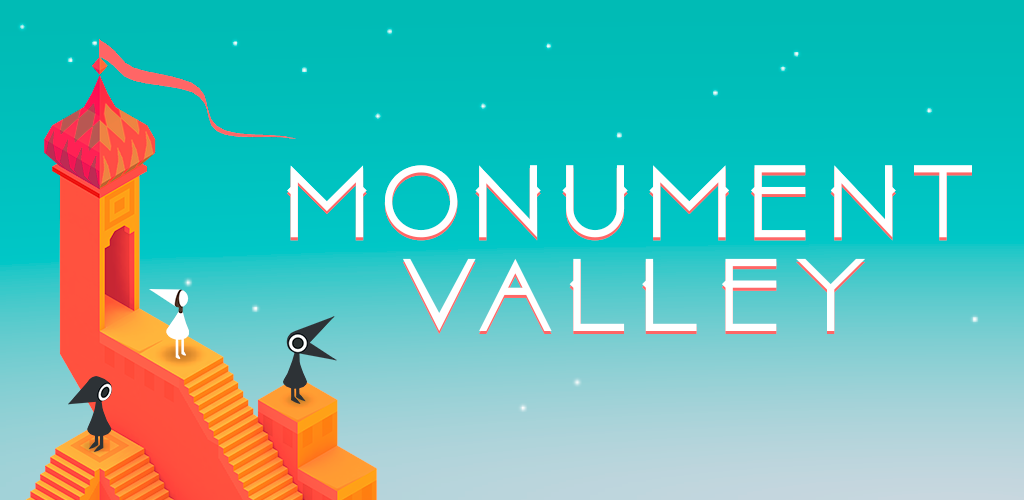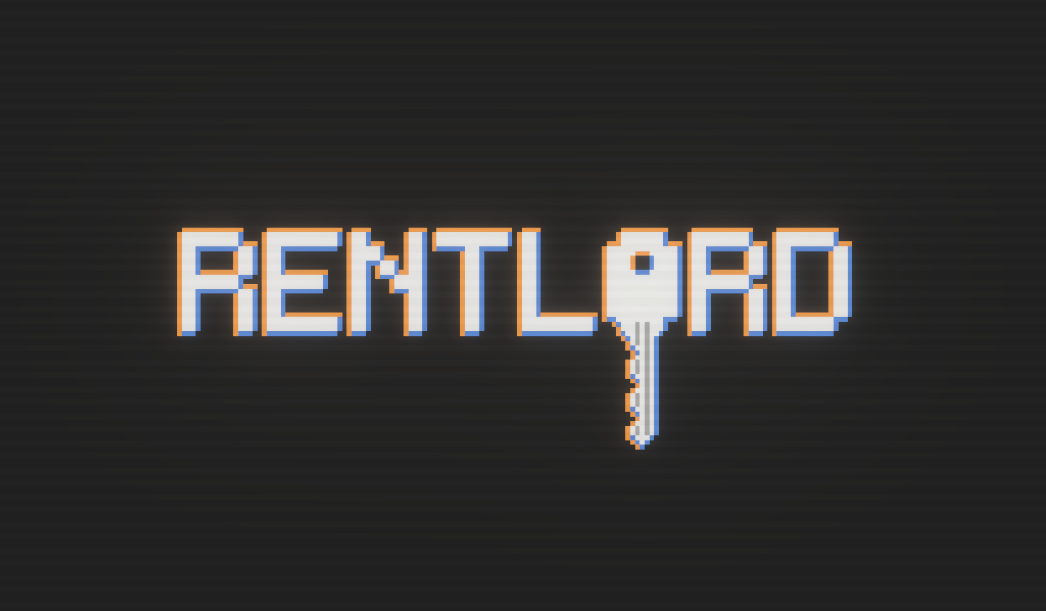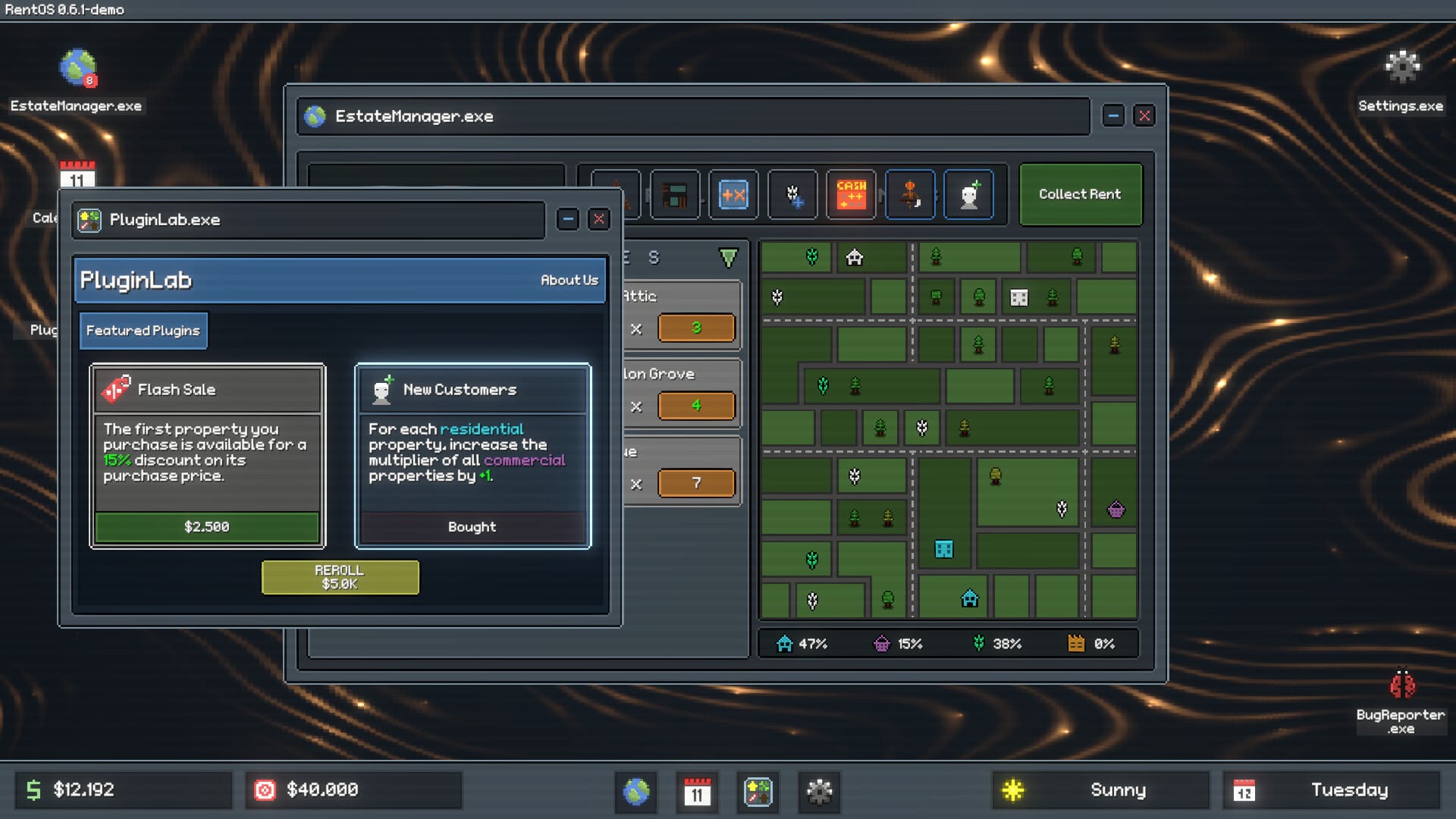Indie Review Roundup, Part 1
We're living in an indie revolution

We are unbelievably lucky to live in times like these. It may not always feel like we are, per se, but in terms of gaming, there is a plethora of content out there just waiting to be eagerly devoured. There are hundreds of games out there made by independent developers, average people like us who deserve attention, one way or another. The notion that a normal person can flex their creativity in ways that really resonate with others is one I value deeply. It is absolutely brilliant that we have such easy access, not merely to games but the general creativity of others. No matter what the fate of the AAA scene may be, I believe we’re in good hands when it comes to indie games.
I’m not going to lie to you all either. I wasn’t always a huge supporter of the indie scene. I know, shocking. I didn’t dislike indie games, I merely overlooked them. I focused on different types of experiences. Over the past few years, however, I feel I’ve really opened my eyes more to what independent developers have to offer gamers, and I regret not taking the plunge sooner. Once you get the taste for indies, there really is no going back. I am still unafraid to tear into an indie if the game simply isn’t good or has its fair share of issues (which you’ll see in one entry later), of course. I don’t see lines between AAA, AA, or indies; I simply see games as a bigger medium, experiences that I cannot receive anywhere else.
And that’s why I’m here to showcase and review a few games for you. I had a lot of fun with my pieces on Steam Next Fest and wished to do something similar once that was done. All of these reviews will be positive except for one in particular that really disappointed me, but as usual when I critique things, I try to be as polite as possible to the developer. It’s their work and their art, so they deserve to be treated with respect for sharing that with everyone.
There’s a game in here that really left me stunned, and may be one of my favorites of all time now. There are two games from the same genre with one standing out more than the other due to its messaging, although the other is an overall better game that really exemplifies game design within that genre. Instead of being cryptic, I shall leave you on the note that I genuinely hope one or more of these games resonates with you enough that you’re willing to try it yourself. Perhaps in the future I’ll do another one of these when I’ve accumulated enough smaller game reviews, since this was really enjoyable to put together.
Monument Valley

I was absolutely floored by Monument Valley. It was a game I overlooked, though never intentionally. It seems almost destined to be overlooked, perhaps owing to its origins as a mobile-only game at a time when such games were defined more by Angry Birds clones than works of art. Monument Valley is a puzzle game, a genre that seems perpetually stuck in the middle of the popularity spectrum. It'ss an indie that only takes 1-2 hours to complete, and yet it sits at “Overwhelmingly Positive” on Steam. While I find the game beautiful in many ways, it doesn’t stand out much when viewed among thousands of other titles on a digital storefront. Monument Valley looks like a pretty little game, which it is, and nothing wrong with that, but the masses likely won’t latch onto it.
What a shame that is - Monument Valley is a stunningly beautiful puzzle game not from sheer visuals alone, but from a music and game design standpoint. There is no voice acting to be found here, and any dialogue you see is kept to a minimum. That very minuscule amount of written dialogue makes the story very open to interpretation. For the sake of keeping things spoiler-free, I won’t provide my own explanation or interpretations. It’s a game you really and truly need to play on your own to genuinely absorb all it has to offer. I wouldn’t be able to do it justice by merely spelling it out to you here, though I will say that it is a very heartfelt story that likely will resonate for many when they really read into the deeper meanings.
I’ll admit I’m a sucker for atmospheric games, and Monument Valley is certainly one of those. The music is brilliant, with the beautiful melodic notes truly enhancing the game’s overall vibes. It invoked Journey the most for me, which is one of my favorite games of all time for its melancholy beauty and loneliness. Monument Valley has a very similar energy. It feels so completely and utterly lonely, and I love it for that. I think games can portray that unique hollowness of melancholy like no other medium really can, so I highly value it when a game like Monument Valley pulls that off. The music helps form that melancholy atmosphere into something hauntingly marvelous.

The puzzle design in Monument Valley is near-perfect. It is so great at ensuring you’re not frustrated during your playthrough, at least not for long. Unlike many other puzzle games where you may bang your head against the wall for a prolonged time, Monument Valley is very much a comfortable difficulty. It’s the perfect difficulty, in fact; not too hard or too easy. It manages to captivate even a person like me who doesn’t usually gel with puzzle games, providing those satisfying eureka moments whenever a puzzle is solved. As a result, Monument Valley is a very relaxing game to play, and I somewhat wish it were longer. Though I am aware there is additional downloadable content and a sequel, I don't particularly think it needs that to resonate the way it does. I believe Monument Valley is, was, and will always be special in its vanilla state.
The core gameplay is simplistic but also rather fresh, and that’s why it works. You click on the screen to guide the protagonist, Princess Ida, towards each level's goal. You click and drag parts of the level to adjust the layout as needed to solve puzzles and guide Ida on her way. That’s all there is to it, to encapsulate what the game’s core design is as briefly as possible. It knows what it wants to do as a game artistically; it sets out to do it and it pulls it off wonderfully.
Each level has its own spin on the game’s core design. One level will have you shifting around a totem in conjunction with Ida to progress through the level, while another has you rotating the entire stage to progress. Perspective puzzles are also common in Monument Valley, where you can only progress by angling the stage in specific ways that may look like an illusion at first glance, but allow you to progress to a higher platform or area. I was particularly thrilled with one level that was contained entirely inside a small box. You’d tug on different parts of the box with your mouse, which would reveal different parts of the level. When Ida went from one part of the level to another, you’d have to close the box and tug open the section she went into, like a pop-up book. It really floored me with how incredibly ingenious and adorable it was. It blew my mind honestly, and it was here that Monument Valley really cemented itself as an incredibly well-designed puzzle game.
I’d highly recommend giving Monument Valley a shot at some point. Whether you like melancholy games like me or merely puzzle games in general, I cannot recommend this wonderful art piece enough. Fantastic work.
Rentlord

I originally wrote about Rentlord in my 3-part piece on the Steam Next Fest here at SUPERJUMP. In that piece, I noted the inevitable rise of Balatro-likes. Much like Survivors-likes became a thing after the success of Vampire Survivors, these Balatro-likes attempt to take Balatro’s formula and put their own spin on it. While I don’t mind the concept, I want developers to be more creative when they use the formula. Don’t just slap it on anything that resembles a board or card game; be creative and do something unexpected. I praised the idea behind Rentlord, finding a property-management spin on Balatro to be a very novel concept on paper.
Rentlord was due to release not long after Next Fest, but I was working under the assumption that it would debut in Early Access. Much to my surprise, it instead came out as an actual full release! This is a huge problem, because as I pointed out when I originally wrote about Rentlord, the game is significantly lacking in depth, detracting from what is otherwise a solid concept. That lack of depth was excusable in a demo, so I assumed the full game would rectify that in some way. If it was released in Early Access, even, I’d also completely understand. By putting Rentlord out as a full release, you’re telling people that your game is ready and complete, when that is absolutely not the case.
Rentlord plays similarly to Balatro, as one might expect. You buy properties that appear on a map which shifts every in-game day. Each property has a base rent and multiplier, with a limited number of different types of properties that skew their values differently. You collect rent for each weekday (not weekends), attempting to hit the revenue goal by the end of the week. You’ll purchase Plugins (similar to Balatro's Jokers) to affect your score, multipliers, etc. There are Portfolios that change the parameters of the run, just like Balatro’s different Decks. That’s basically the gist; it’s a fun idea. The music is lovely, and the UI is great, resembling a desktop interface, though I wish there was an option to turn off the CRT filter. At a base foundation level of a game, there’s good quality design here.
However, Rentlord is so utterly barebones that it is genuinely shocking to me that it’s not an Early Access game. The prime example here is the Plugins. Do you want to take a guess at how many unlockable Plugins are in Rentlord? Go on, take a quick guess. Just 17, that’s it, with 46 in total. That’s absolutely dreadful for a game based on Balatro, much less a roguelike deckbuilder. A roguelike should have a large amount of diversity, new things for players to find on the presumably large number of runs they will go on. You want to give players a reason to really get pumped up when they start a new run. Each one should feel fresh, requiring quick thinking on the fly to adjust your strategy based on what becomes available. Rentlord doesn’t have that at all, and it’s a glaring, fatal flaw for a game derivative of Balatro. I noted even from Rentlord’s demo alone that you’ll keep seeing the same Plugins over and over again. This hasn’t been rectified at all upon release.

To exemplify Rentlord’s lack of depth, look at my playtime. I have unlocked 23 of Rentlord’s 34 Achievements in only my 2 meager hours of gameplay. I’ve unlocked 8 of the 17 unlockable Plugins already. Is that not insane to anyone else?! How can you release a Roguelike game that has the potential to be completed this quickly?
Listen, I get it if you’re excited to release your new game, but there was no reason for Rentlord to be pushed out as a full release. I respect the cheap pricing, but I still don’t see the point of playing this game over Balatro in its current state. A full release should not have content slapped with a “Coming Soon” tag. I’m absolutely shocked the game doesn’t have anything besides Plugins to affect your runs. Rentlord almost immediately becomes stale after several runs as a result of its lack of depth.
Nothing against Rentlord's developers, but the game simply wasn’t ready for prime time. It needed several more months at least, purely to add more depth. Give it more time to bake, don’t take it out of the oven when it’s undercooked! All of that content on the Roadmap? That should be what the game is launching with as a full release. You don’t release a game and say all of the content is coming later. You’re a roguelike deckbuilder, not a live-service game. Rentlord has a cool concept on paper, and it makes me really upset to critique it like this, since I felt like they really had something with a lot of potential on their hands. Perhaps it still does have potential as it gets updated over time, in the same vein as Cyberpunk 2077 or No Man's Sky. I wish the developers well.
I cannot in good faith recommend Rentlord at this time, nor can I rate it well. The state of the game at release is utterly barebones, barren of content and boring, making it overall a mediocre game.
Click & Conquer

Click & Conquer was another demo I covered in my Steam Next Fest overview. I was particularly taken by this little clicker idle game, so I thought it’d be worth a pick-up of the full title. Click & Conquer sets out to be a relaxing idl experience, and I really believe it pulls that off. However, there’s a lot more here from an artistic standpoint than one may expect, which is worthy of praise as well. I’ll be spoiling a bit of the game's messaging that mainly comes late-game as well as when you beat the game, so please keep that in mind before you read on further.
Click & Conquer’s gameplay loop combines an idle clicker with a bit of Minesweeper. The currency you’ll earn each second is called War Bonds, though I found myself merely calling it “Cash” because of the icon it uses, and I will proceed to do so from here on for convenience. You’ll use this Cash to purchase upgrades as well as new areas. When a new area is unlocked, it’ll open up another branch of upgrades for you to unlock. Rinse and repeat until you reach the Pyrrhic Victory “upgrade”, which will end the game once you finally purchase it.
There’s a tad more to Click & Conquer’s gameplay than merely allowing funds to accumulate. While you can make progress by leaving it idle, you’ll inevitably find that progress grows very slow at one point or another, much like many other idle clickers. That’s where the Minesweeper-like portion of the game comes into play. Each unlockable area is where you enter the “Conquer” phase. You’ll find a battlefield in a grid format, each square of the grid shrouded by fog that you’ll have to drop a set amount of bombs into. Your goal is to defeat as many enemy troops as possible on the field before you run out of bombs. You’ll earn cash for each enemy defeated, as well as XP for the area. Each time an area levels up, it’ll add a permanent percentage boost to the cash you earn per second.
As you progress, later areas will have a larger field and more enemies, along with enemies that take more than one bomb to defeat, but the percentage boosts you receive for leveling up these areas are progressively larger. You can upgrade the damage radius for your bombs to reveal more fog, as well as increase their quantity or damage later on. Thanks to this part of the gameplay loop, Click & Conquer demands more involvement from the player than your average idle clicker. Late-game, especially, is where you’ll find that you need to farm those hefty boosts to reach the trillions that the game asks of you.

During the “Conquer” phase of the game, you’ll also collect Intel. Funnily enough, the upgrades in the demo didn’t name this item as Intel, so I speculated on what these paper things were called. Intel was one of my guesses, and it makes sense. You’ll need to spend Intel when prestiging (resetting current progress in exchange for permanent bonuses) to access upgrades that provide needed boosts to your cash flow. I’d highly recommend bee-lining the upgrades that keep your progress whenever you prestige. You can only carry 3 Intel to start, but you’ll be able to carry 3 more for each area you unlock, at a max of 33.
It’s here that I must critique Click & Conquer a bit. You’ll find a plethora of upgrades that increase the spawn rate of Intel, purchasable with both cash or in the prestige menu with Intel. I don’t quite understand why these are here, though. Once you buy and invest in one of these Intel spawn rate upgrades, they appear quite often. You don’t need to stack multiples, since you’re constantly hitting the limit of how much Intel you can carry anyway. It feels pointless to upgrade the Intel spawn rate any further; they just seem like a waste. If there was no limit on how much Intel you could carry, I suppose I could see the logic in it, but as it stands, these unfortunately feel like dead upgrades. Towards the mid-to-late game, I was disappointed whenever one of these appeared instead of a more interesting cash upgrade. Almost every single branch of the progression tree has at least one of them.
Back to the spoilery bits I mentioned earlier: Click & Conquer’s final message really resonated with me as someone who is very adamantly anti-war. Upon beating this game, the same game where you’ll often drop bombs on soldiers in the midst of battlefields or even cities, you receive a rather sobering on-screen message. This message quotes American writer and novelist Pearl S. Buck: “In any war, a victory means another war, and yet another, until inevitably the tides turn, and the victor is the vanquished, and the circle reverses itself, but nonetheless, a circle.”
It is a very fitting quote for the gameplay on offer, where you’re constantly in this loop of going back to the battlefield to farm more cash by defeating more enemies. The wheels of war keep turning, and it’s a never-ending cycle. I’m of the mind that this kind of messaging is something that needs to be said in today’s climate, and I believe it makes Click & Conquer as a whole resonate much more than it otherwise would’ve.
Click & Conquer isn’t an idle clicker that you’ll play endlessly, and that is likely by design. Even if it's not, it aligns with the game’s messaging beautifully. What is left to achieve after everything is destroyed or “conquered”, if you will? It’s a lovely and relaxing little clicker game, though not inherently remarkable or mind-blowing. The pricing is very generous, so I’d recommend picking it up, but I'm not enthused enough to rate it too highly, though I really enjoy what it tries to do within the genre. To end off, I believe the achievement description for reaching the game’s Pyrrhic Victory is actually a great encapsulation of the game’s messaging, and a perfect way to really have you think about what Click & Conquer really means - “You won, but at what cost?”
We're only halfway done with our indie game review roundup, so click over now to Part 2 for three more games we loved! And always stay tuned to SUPERJUMP for more reviews, interviews, and so much more!
